Five Commute Exercises To Do For Neck Pain and Lower Back Pain
Typical activities while commuting, like staring at your phone or reading, also increases neck tension.
Your commute, plus sitting at work, is a lot of time that your lower back is inactive; therefore, causing lower back pain. “If you don’t use it, you lose it”. While we may not be able to do anything about the commutes (aside from relocating closer to our workplaces), we can optimize our time commuting to ensure your body won’t feel the after effects of logging countless hours on the bus or train.
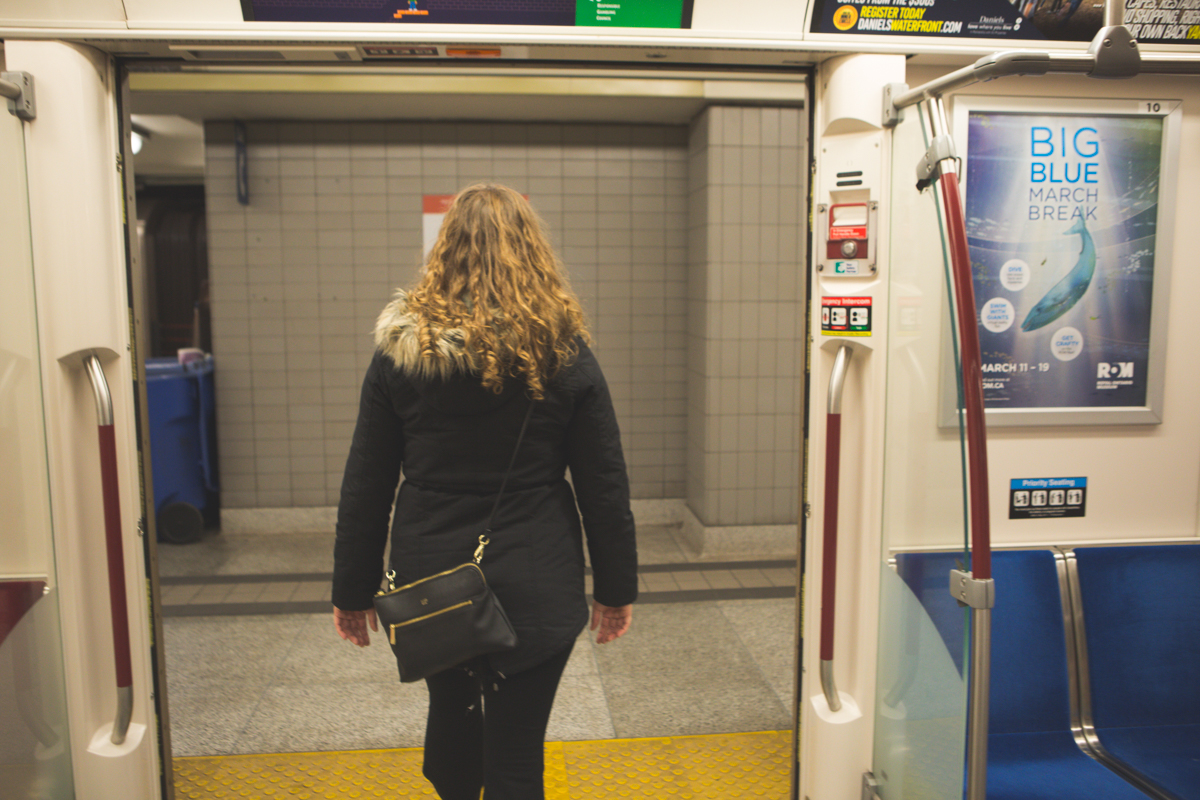
Get on/off your stop earlier
Depending on what your job is, you may already be spending most of your day sitting at a desk. Why not change up your routine and get on or off at a farther stop. Walking a few extra blocks will help activate your glutes which can contribute to decreasing lower back pain. Walking will also allow you to spend a bit more time each day in an extension position which will counteract all the hours spent in flexion at work. It’s also an excellent opportunity to destress from the day and reflect on things you may need to get done at home.
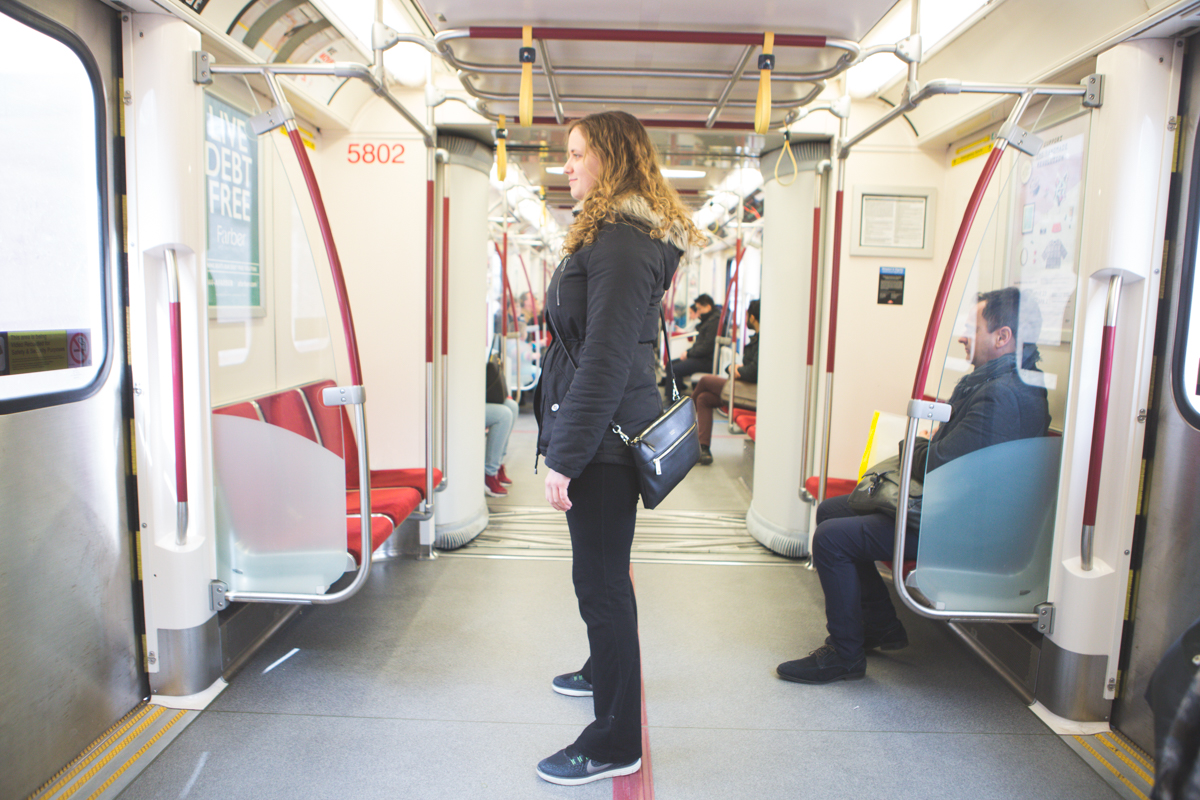
Practice your balance while riding public transit
This one is almost forced some days when the bus, streetcars or subways are full to the brim and there are no handrails to hold. But granted you are relatively stable as is (i.e. no severe balance issues), use this time to practice your balance by standing with no handrail support. The movement of the vehicle will provide external perturbation which will challenge your proprioception. Safety tip: it’s recommended to do this near a handrail in the event a significant bump, or sharp turn unexpectedly happens.
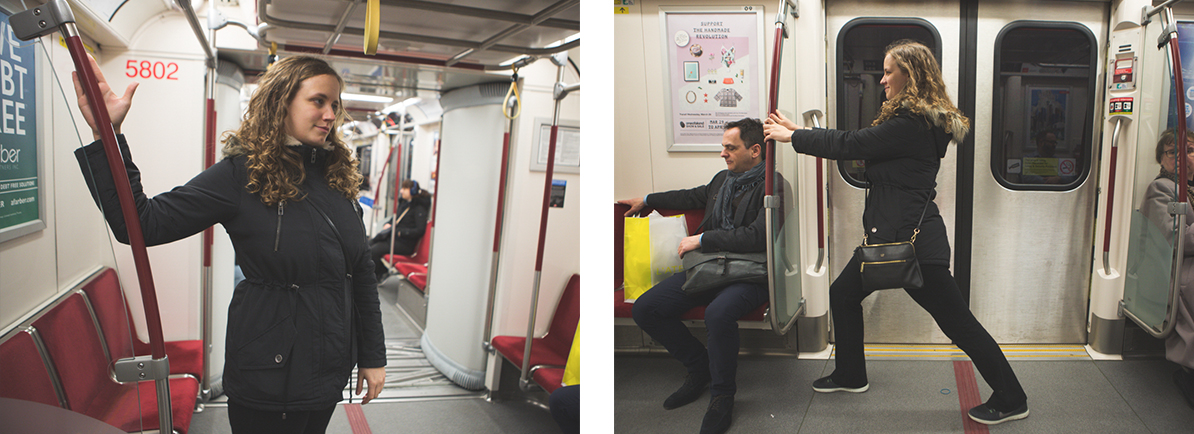
Use the handrails for stretching
As mentioned, many of us spend a significant portion of our days in a flexed forward posture. This positioning has many adverse effects on our bodies,neck pain being a main culprit. Why not use your commutes to help you stretch out these tight structures? Use the handrails to get in a pec stretch or use two and stretch out those hip flexors. Anyone staring is just jealous they never thought of it.
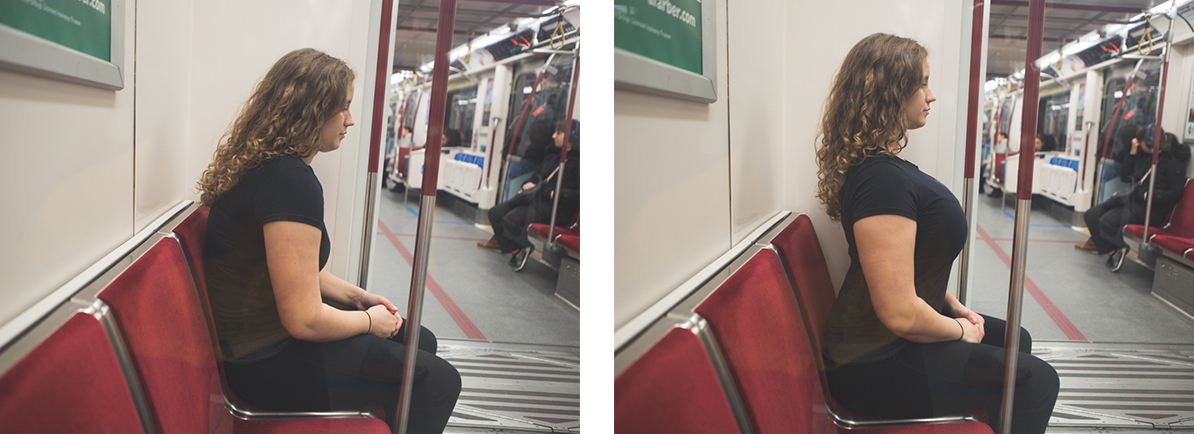
If you MUST sit, actively sit
Unless your commute is more than an hour, do your best to stand for most of it. This is especially true for those of us who will be sitting the rest of the day. However, if you need to sit, make sure to sit actively. When sitting, don’t slouch, don’t sit at the front of the seat and lean back and don’t lean excessively to the side. Instead, sit back in your seat, use the backrest for lumbar spine support and engage your core. For added benefit, perform seated cat/camels to keep your spine moving.
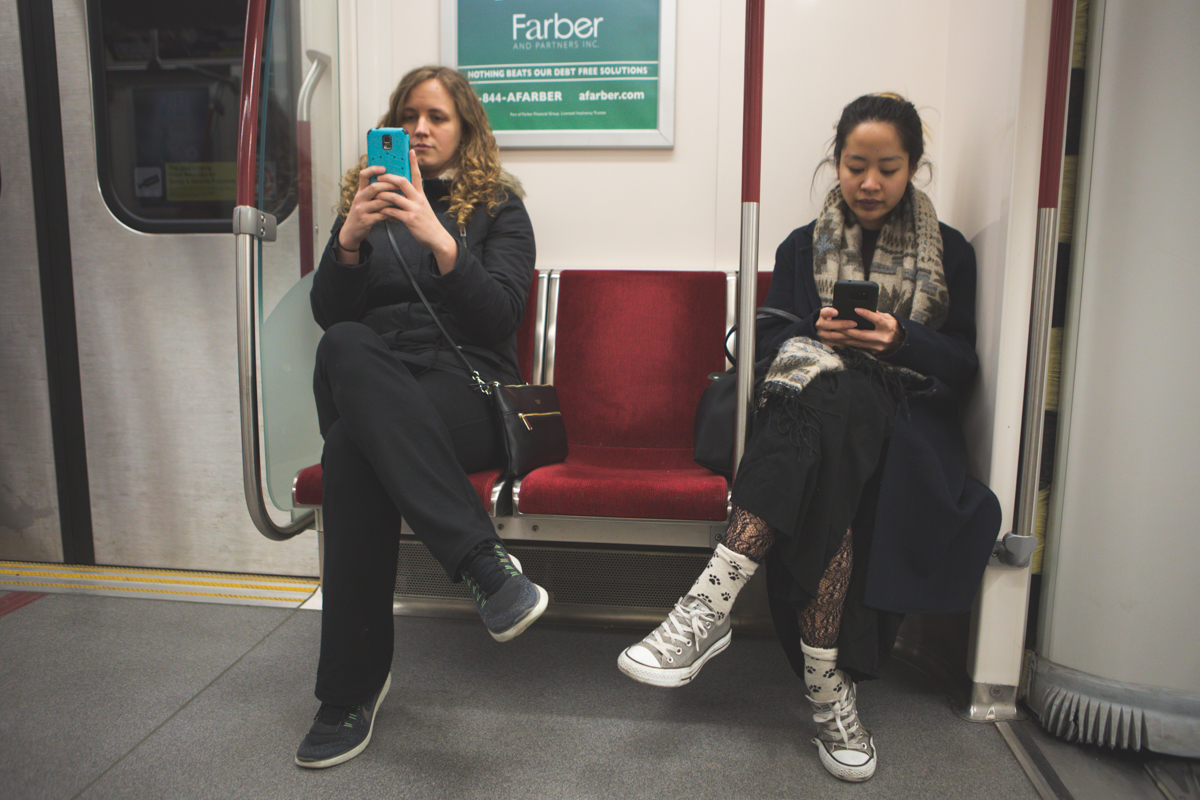
Read or listen to podcasts while avoiding forward head posture
Using the dreaded commute for your personal gain can actually cause you to enjoy your time spent on public transit. However, with the crowded buses, streetcars, and subways, taking out your laptop may not be feasible. Try downloading some motivational podcasts or books that will help you to prepare for your day or week.
When reading, make sure to keep your posture in mind. Keep your elbows close to your sides and use them to prop your book up to eye level to avoid excessive neck flexion and forward head posture. When you’re finished, do a quick stretch for the front of your neck by extending, rotating and side bending until you feel a gentle stretch. Follow up with some chin tucks and you’ll be ready to start or finish your day right.




